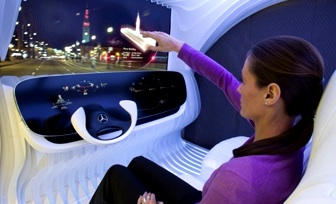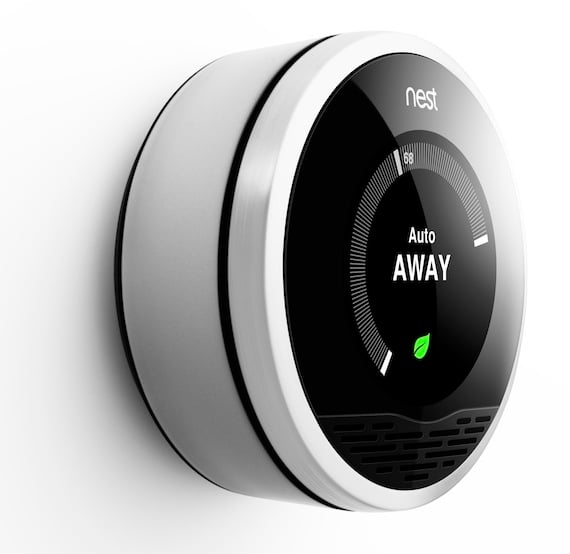Original URL: https://www.theregister.com/2014/08/04/internet_of_things_standards_groups_rivalry/
It's War: Internet of things firms butt heads over talking-fridge tech standards
No, I want to be the one with the bat and the ball
Posted in Edge + IoT, 4th August 2014 13:01 GMT
Intel’s Internet of Stuff standards-seeking group is planning to have a first code drop of middleware ready for developers in the third quarter this year, the firm told The Register.

Gary Martz, Chipzilla's wireless product line manager, said that between members like Intel, Broadcom, Samsung, Dell and Atmel, the Open Interconnect Consortium (OIC) had been working on getting devices to cooperate with each other for over ten years.
“We very much know how to do this,” he said. “We have a lot of code already done and implemented and between the companies we’re integrating this together into a combined solution to provide the best possible first code drop, which we’re looking to deliver later this year in the Q3 timeframe.”
Martz said that the consortium’s first stab at an open interoperability standard for the newly minted Internet of Things sector wouldn’t be an alpha or a beta code drop either.
“It’ll be a very robust code drop, very full-featured, that combines solutions that these companies and others have been working on for many years,” he boasted.
Intel’s OIC is the latest group to put their minds and money into coming up with standards for the Internet of Paraphernalia. The consortium’s biggest and most similar rival is probably the Allseen Alliance, which features big names like Microsoft, Qualcomm, Cisco and Symantec, but there are also firms that are going it alone, like Google and Apple.
Even governments are getting in on the action – Blighty’s parliament is backing an initiative that includes firms such as BT, IBM and ARM called HyperCat. The open source specification aims to help firms search for data in formats like HTTPS, Restful APIs and JSON in order to get devices to find each other.
We're all friends here, lads

That aim is slightly different to the hopes of the OIC and Allseen, which both want to be the one behind the open source interoperability standard that industries as diverse as automotive, consumer and health stick in their devices.
Since Gartner has predicted that the Internet of Odds and Ends market will add $1.9trn to the global economy by 2020 and McKinsey Global Institute reckons that the sector could create an economic impact of $2.7tn to $6.2tn by 2025, it’s no surprise that tech firms feel getting in on the ground level is a good idea. But neither group wants to see themselves as rivals.
“We don’t think of it as a competition,” said Joe Speed, director of IoT for the Linux Foundation, which is backing the Allseen Alliance.
“We’re happy to see our industry peers affirming the goals and objectives that AllSeen Alliance laid out when we were formed in December - the need for a common interoperable platform for the Internet of Everything,” he added, perhaps a touch cattily.
The OIC only came along earlier this month, which Allseen might view as being a little late to the party. But Martz claims that existing attempts to find a solution to interoperability weren’t getting it done as far as Intel was concerned.

“If you talk to those other organisations and you look at how they’re set up and their IP policy and also what they’re looking to accomplish, some of the other efforts are really more consumer-focused and really looking to drive in the consumer market,” he said.
“But when we’ve looked at the solutions and the technologies behind them and IP policy and the standards, we really struggled with how these were going to scale outside home automation to address enterprise needs and industrial needs.
“So it really came down to how we drive participation and adoption to get to market the quickest with the solution that the majority of the industry can adopt - and the majority of the industry is not just the consumer market.”
However, he was keen to stress that he doesn’t see it as “a race” between OIC and Allseen.
“In the tech space we see this all the time, we see Wi-Fi versus Home RF, we see LTE vs WiMAX, we see Betamax vs VHS. And this is how we end up with the best solution - from a technology perspective, from an IT perspective and from a time-to-market perspective. We innovate and if you want to look at it as competing, that’s what happens,” he said.
“Big industry players have various ideas about how we should bring this tech to market and various motivations for wanting to do so and this is that playing out.”
Let's ditch this web malarkey, shall we?
But regardless of how nicely everyone wants to play with each other, an interoperability standard isn’t going to work unless everyone is using it.
“Interoperability cannot be achieved in a fragmented industry, and the Internet of Everything doesn’t work unless the “everything” works together,” Speed pointed out.
Both Allseen and OIC are working on the code that will achieve that – get devices talking to each other directly instead of over the cloud or through some other intermediary. Martz points out that it’s crazy that mobile phones come equipped with broadcasting methods like WiFi, 3G, 4G and Bluetooth, but in order to send a file from one to another, it’s probably going to go through the web first.
“It’s a lot more efficient if I can send that document to you peer-to-peer. We have very capable radios in our devices that can communicate with each other, it’s just hard for the developer to integrate that communication methodology into his applications,” he explained.
“They need to understand Bluetooth protocols, various APIs for WiFi direct, when WiGate comes, they need to understand that. So there’s firewall issues, there’s NAT traversal issues - this is a very complicated problem for developers to incorporate into their apps.”
Intel and its partners are coming up with the middleware to allow that to happen, while Allseen is using the AllJoyn open source project as its base and building up from there.
“Rather than having an organisation that spends a lot of time debating specs and writing hundreds of pages of docs that then need to be interpreted and implemented by different companies, the AllSeen Alliance members are focused on what contributions of code they want to make to advance the work,” Speed said. “If something is missing in the AllJoyn framework, our members are actively putting in effort to fix it or improve it.”
Whose side are you on anyway?

Aside from the coding, this is a battle for hearts and minds, since the consortium with the most members will have a much better chance of getting its standard to the top of the heap. Despite the fact that both groups are trying for standards that are useful outside home automation and other consumer uses, it’s the consumer industry that’s seeing a lot of the first IoT devices. That makes consumer manufacturers like Google and Apple look like quite the catch to either consortium.
Both firms have announced their own partnerships and appear to be concentrating on their own ecosystems for now and neither has made any public comment on IoT standards. Google is working with newly acquired Nest on protocols for high tech homes, while Apple announced its own HomeKit system APIs at its last developers conference.
Naturally, neither firm would answer requests for comment from The Reg, but Martz acknowledged that the big players will have to be heard.
“All the big companies in this space will have a say in how these standards evolve. How they eventually evolve and where they lean and who partners with who – that’s still to be determined,” he said.
He also hinted that the OIC may have more snagged more of these big players than it originally announced.
“There’s a whole bunch of people that are already in the consortium that weren’t in the original announcement and there’s more to come. I will say that the enthusiasm and the response we’ve gotten from the OIC announcement has been as much or more than we expected,” he said. ®